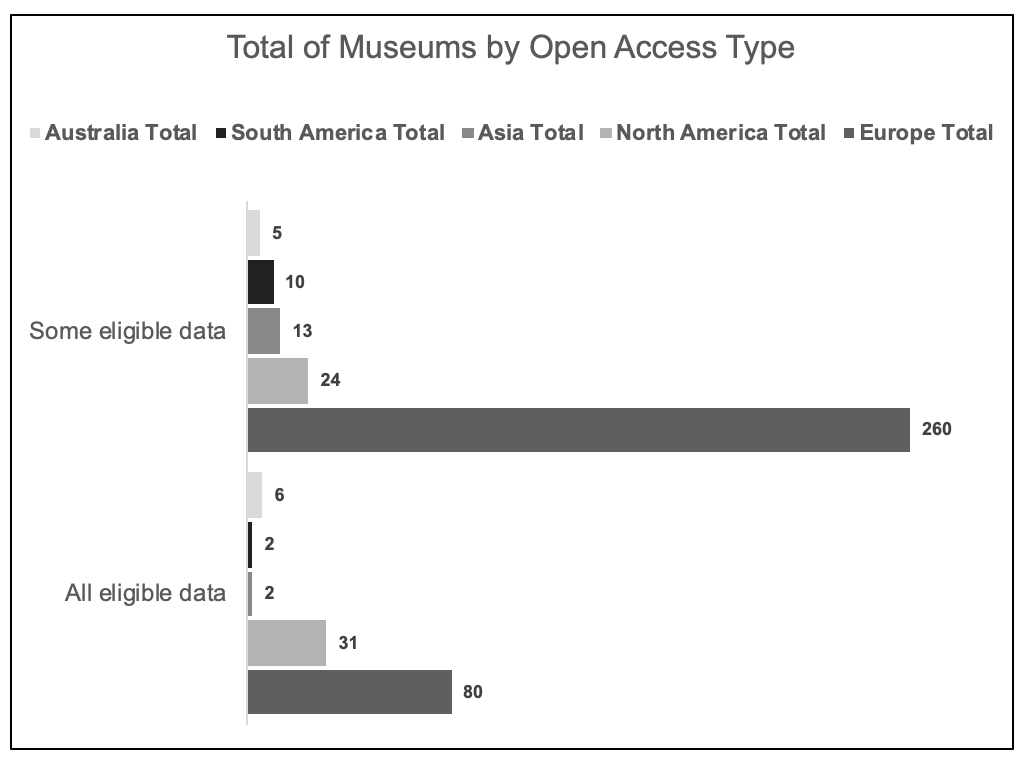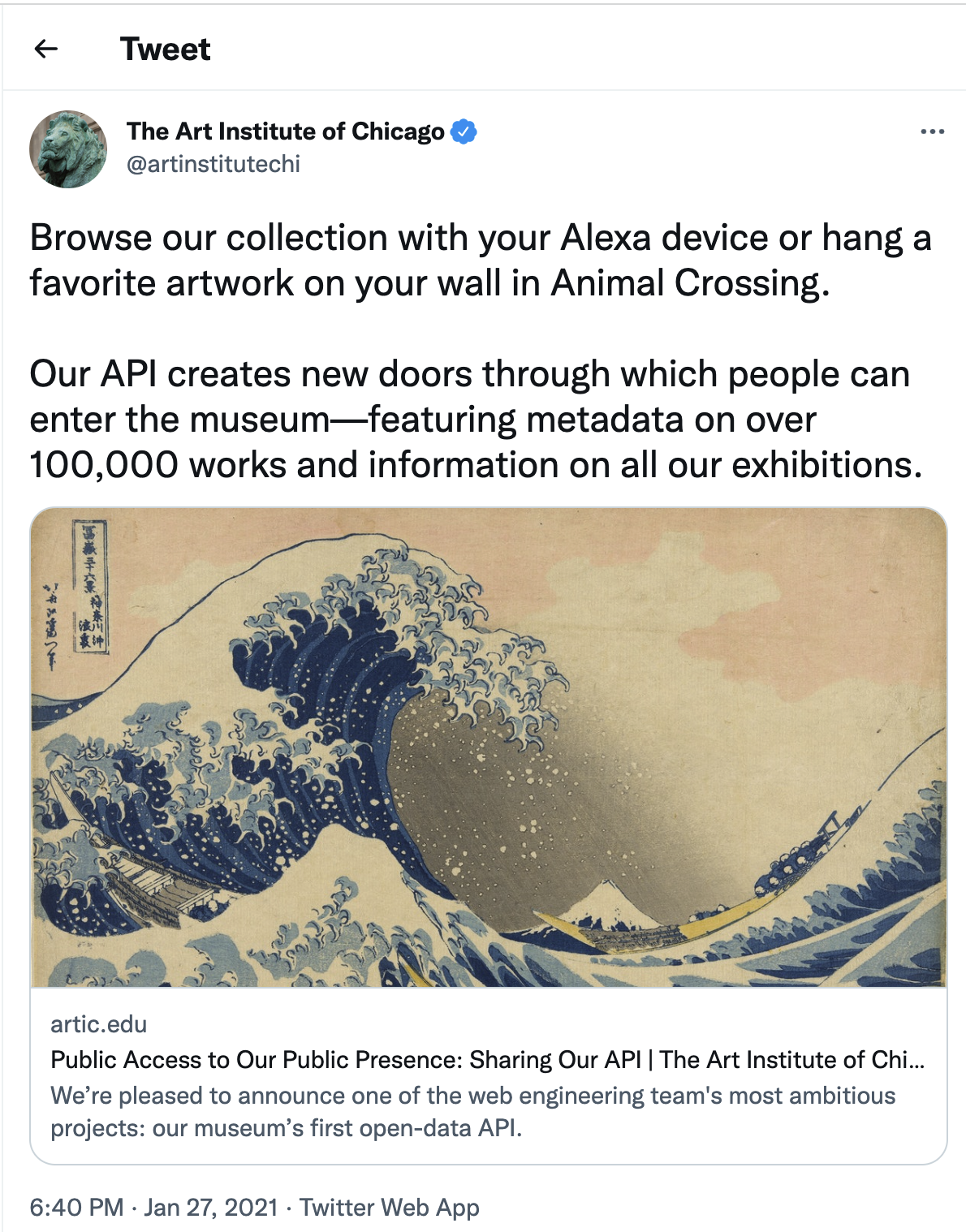The Great “Opening”: Case Study of Art institute of Chicago's Public API, Open Source Code, and Open Access Images
The final assignment for my Museums & Digital Culture class culminated in a case study of the Art Institute of Chicago’s (ARTIC) open access initiatives, which was a public API launch and collection data release (access to 50,000+ images under the Creative Commons Zero designation and collection metadata). I investigated how open access can facilitate “digital as change agent” within the current landscape of cultural heritage institutions, with a specific lens of technical logistics, audience reach, internal dynamics, and equity and inclusion.
Through interviews with Nikhil Trivedi (director of engineering at ARTIC), data analysis of a current global survey on open access standings of participating GLAM institutions, and research on the broader museum sector, I generated a set of recommendations for ARTIC to support their newly deployed open access initiatives.
Noteworthy to mention, some of the actions ARTIC had already taken provided them with an advantage in this endeavor. These actions included having dedicated technical resources, interdepartmental collaborative approaches, and advantageous timing with an institution-wide website relaunch.
Through a competitive analysis of notable GLAM institutions like The Cleveland Art Museum and The Met (both serving as open access archetypes in their own right), I researched what methods they employed to facilitate their “opening” and how they were measuring “success”. These findings directly informed my recommendations to Mr. Trivedi on how ARTIC could advance their open access initiative.
This project allowed me unprecedented exposure to the technical and inter-departmental requirements of an institution embarking on a digital open access initiative. Ultimately I learned how the process of opening a museum’s collection data and releasing a public API is not just a technical endeavor, but an effort that employs the mindshift and trust of internal stakeholders across the institution.
The findings I produced from this case study can offer recommendations that other cultural heritage institutions can adopt in the efforts to connect to a wider audience through the opening of their collections. A main takeaway of this project is a greater understanding of the technical and interpersonal logistics of what open access demands and how measurements of success can allow for further expansion of museum open access programming.



